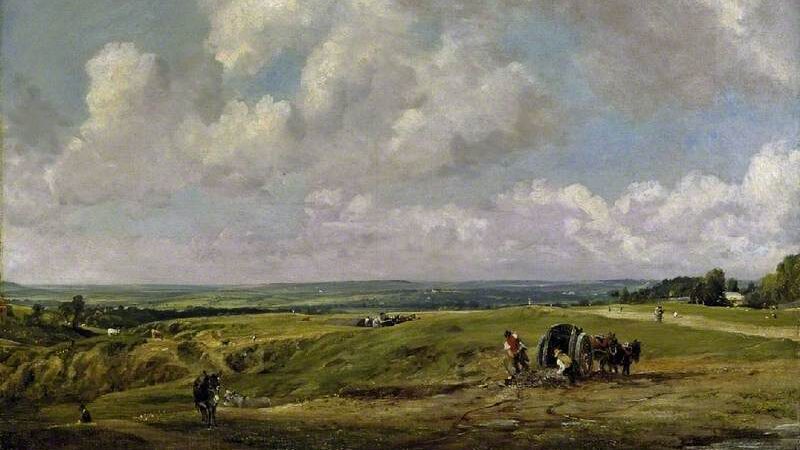
Hampstead Heath (1820), a 54 x 76.9 cm oil on canvas by John Constable (1776-1837), located in the Fitzwilliam Museum in Cambridge, England.
A British museum, run under the aegis of Cambridge University, has overhauled the signage for its historical paintings, one of which says those depicting the British countryside can trigger “dark nationalist feelings” in whoever may glance at them.
The preposterous change is part of The Fitzwilliam Museum’s reopening last week with galleries based on themes (“Men Looking At Women”, “Migration and Movement”, and “Identity”) rather than chronology, which would place historical paintings alongside modern works of art.
A sign for the new “Nature” section reads:
Landscape paintings were also always entangled with national identity. The countryside was seen as a direct link to the past, and therefore a true reflection of the essence of a nation.
So far, so good. However, the plaque goes on to note, seemingly disapprovingly, that “paintings showing rolling English hills or lush French fields reinforced loyalty and pride towards a homeland.”
The sign for “Hampstead Heath,” one of romantic realist painter John Constable’s many oil sketches of the area (which he came to adore and would later be buried in) takes it one step further.
It alleges a “dark side” to the patriotism the work might evoke, carrying the “implication that only those with a historical tie to the land have a right to belong.”
Speaking to The Observer, Fitzwilliam Director Luke Syson said the newfangled signage “suggest some new ways of looking, without insisting on them,” denying criticism that the museum had turned “woke.”
“Being inclusive and representative shouldn’t be controversial; it should be enriching,” Syson said. “I would love to think that there’s a way of telling these larger, more inclusive histories that doesn’t feel as if it requires a pushback from those who try to suggest that any interest at all in work by women artists or artists of colour—or subject matter that takes us into the world of LBGT culture—is being ‘radical chic’ or what would now be called ‘woke.’”
According to The Telegraph, social justice-tinged signage for the painting (and others) came not long after the environmental group Wildlife and Countryside Link complained to legislators that the British countryside is viewed “as a racist colonial white space.”
In its ‘Diversity and Anti-Racism Statement’, the environmental organization asserts:
The impacts of pollution and other environmental problems often fall most heavily on minority ethnic communities, who are less likely to live in a healthy environment because of racial inequalities.
How, even if the above statement is true, whole communities of “minority ethnic” [i.e., non-white] people could possibly have existed in 18th century rural England, something the organization—perhaps wisely, so as not to undermine its own argument—neglects to say.
In a blog posting, Sharon Heal, director of the London-based Museums Association (a non-profit organization that “campaigns for socially engaged museums,”) noted last year it had “doubled down” on its efforts to “support the wider sector to address the legacy of empire, including racism, in museums.”
Her group dedicated £20,000 (about $25,500) to various anti-racism initiatives and made “decolonisation” a “central plank” of its Code of Ethics.
Judging from The Fitzwilliam’s museums ‘Equity, Diversity and Inclusion’ section, in which it says it seeks “to be actively anti-racist in action—not just in words,” that campaign appears to have paid off.
For now, the English taxpayer, through the Arts Council England, continues to foot the bill for such projects, as they facilitate the diminution, if not outright demonization, of his own nation’s history. The “anywheres,” among which are England’s current and aspiring elites, as pointed out by Mary Harrington in an Unheard column, are however certain to feel right at home in the ‘new and improved’ Fitzwilliam Museum.
